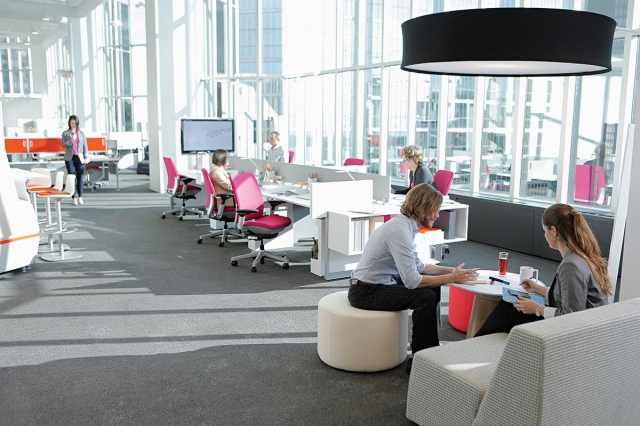3 tips to combat workplace distraction

By HRgrapevine
The workplace is fraught with distractions; the internet, loud phone rings and general murmuring arising from chatter.
63% of executives believe employees have the tools needed to filter out distractions.
However, only 41% of employees agreed.
A study by Oxford Economics, in collaboration with Plantronics, found that the ability to focus without interruptions was ranked top of employees’ workplace wish lists, while novel amenities fared less important.
They also found that Millennials are more likely to be distracted from work by noise and are generally more annoyed by ambient noise in the office.
Office design can help to combat a wandering mind and, accordigly, Entrepreneur has collated three tips to keep distractions at bay.
1. Ask for feedback
To reduce the disparity between what employers and employees consider distracting, just ask. The Oxford Economics study found 62% of executives have private offices compared to just 14% of employees. Also, 59% of executives reported that they had tools they needed to work anywhere in comparison to 40% of employees. If employees are most effected by distractions, ensure to get their feedback to create solutions.
2. Offer privacy
A Steelcase study found that employees get interrupted every 11 minutes, and it took them up to 23 minutes to get back into the "flow" at work, where they feel deeply engaged. 95% said that working privately was important to maintain flow, but only 41% could actually do so. 31% said they had to leave the office to complete work.
Entrepreneur suggests having a combination of “private” work spaces and more open spaces for collaborative work. They also recommend having plants around to absorb noise, or invest in white noise machines to cover loud office sounds.
3. Provide tools for better concentration
There are web tools out there that can help employees to better focus; reducing their web search detours, and preventing them for spending too long on distracting sites.
Offering headphones can also help to combat the noise problem, as music is often linked to higher concentration levels.
Sharing performance data is also a way for employees to see what tasks and what time of day leads to higher distraction levels. From this, offering effective time management methods can help to prioritise their concentration on more important tasks.






.jpg)